| ________________
CM . . . . Volume XVII Number 24. . . .February 25th, 2011. 
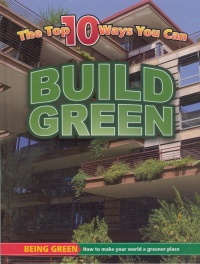 |
Build Green. (Being Green).
Nick Winnick.
New York, NY: Weigl (Distributed in Canada by Saunders Book Company), 2011.
32 pp., pbk. & hc., $12.95 (pbk.), $27.13 (hc.).
ISBN 978-1-61690-089-2 (pbk.), ISBN 978-1-61690-088-5 (hc.).
Subject Headings:
English language-Alphabet-Juvenile literature.
Alphabet books.
Sustainable Bioculture.
Juvenile literature.
Grades 4-6 / Ages 9-11.
Review by Suzanne Pierson.
***1/2 / 4
|
| |
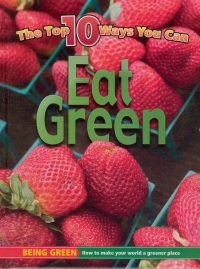 |
Eat Green. (Being Green).
Anita Yasuda.
New York, NY: Weigl (Distributed in Canada by Saunders Book Company), 2011.
32 pp., pbk. & hc., $12.95 (pbk.), $27.13 (hc.).
ISBN 978-1-61690-092-2 (pbk.), ISBN 978-1-61690-091-5 (hc.).
Subject Headings:
Sustainable Bioculture.
Juvenile literature.
Grades 4-6 / Ages 9-11.
Review by Suzanne Pierson.
***1/2 / 4
|
| |
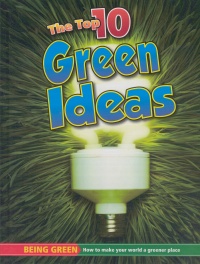 |
Green Ideas. (Being Green).
Anita Yasuda.
New York, NY: Weigl (Distributed in Canada by Saunders Book Company), 2011.
32 pp., pbk. & hc., $12.95 (pbk.), $27.13 (hc.).
ISBN 978-1-61690-095-3 (pbk.), ISBN 978-1-61690-094-6 (hc.).
Subject Headings:
Environmentalism-Juvenile literature.
Grades 4-6 / Ages 9-11.
Review by Suzanne Pierson.
***1/2 / 4
|
| |
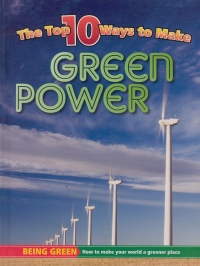 |
Green Power. (Being Green).
Nick Winnick.
New York, NY: Weigl (Distributed in Canada by Saunders Book Company), 2011.
32 pp., pbk. & hc., $12.95 (pbk.), $27.13 (hc.).
ISBN 978-1-61690-098-4 (pbk.), ISBN 978-1-61690-097-7 (hc.).
Subject Headings:
Renewable energy resources-Juvenile literature.
Grades 4-6 / Ages 9-11.
Review by Suzanne Pierson.
***1/2 / 4
|
| |
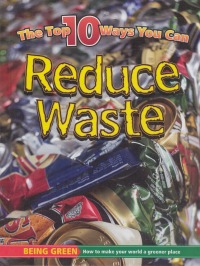 |
Reduce Waste. (Being Green).
Nick Winnick.
New York, NY: Weigl (Distributed in Canada by Saunders Book Company), 2011.
32 pp., pbk. & hc., $12.95 (pbk.), $27.13 (hc.).
ISBN 978-1-61690-101-1 (pbk.), ISBN 978-1-61690-100-4 (hc.).
Subject Headings:
Recycling (Waste, etc.)-Juvenile Literature.
Sustainable energy-Juvenile literature.
Grades 4-6 / Ages 9-11.
Review by Suzanne Pierson.
***1/2 / 4
|
| |
|

excerpt:
Making the World a Greener Place
How can you make the world a greener place? You can help the planet by reducing your carbon footprint. A carbon footprint is the measure of greenhouse gases produced by human activities.
Greenhouse gases are created by burning fossil fuels. People burn fossil fuels for electricity, heating, and powering vehicles. One of the biggest causes of climate change is the greenhouse gas known as carbon dioxide. Many scientists believe that carbon emissions are more damaging to Earth than any other kind of pollution. (From Eat Green.)
The “Being Green” series books, published by Weigl, are AV2 media enhanced books. Weigl has included a code on page 2 of each book that links the user to enhanced content including audio, video, web links, quizzes, activities, and a slide show – at no additional cost. No more fighting with your young researchers to go to the books first. These books are the natural starting point for their search.
Click on the audio links and students will hear portions of the text read to them. This will be useful for students who are learning English or less fluent readers. The web links lead students to research sites and interactive games. The video icons let them watch information videos on the specific topic of each book. There are opportunities for students to expand each topic as well. Great for those who need some extra support and for those who need opportunities to dig deeper and expand beyond the expected.
“Being Green” looks at different aspects of being environmentally responsible in the areas of building, eating, thinking, power, waste management, and travel, focussing on ways that individuals can make a difference.
Borrowing from the popular format of creating a Top 10 list of ..., each book explores 10 ideas for making more sustainable choices in a specific field. Each double page spread looks at a different idea. The left hand page gives an overview of the idea accompanied by a colourful photo. The right hand page gives more in depth information and suggestions for things that the reader can do. For example, idea 8 in Build Green is about the “Go Green Initiative.” The left hand page explains that the “Go Green Initiative provides plans and information for students to bring green ideas to their homes and schools. There are four simple steps to the initiative.” The right hand page explains “Ways to Create a Green Plan for Schools and Communities,” which are “Build a Team,” “Make a Plan,” “Talk about the Plan” and “Find Partners.” A related quotation from individuals ranging from Mahatma Gandhi to David Suzuki are included on each information page.
I did not review Travel Green, but each of the other five books in the series follows a similar pattern. Each book begins with an introduction titled, “Making the World a Greener Place.” Ten ideas about the environmental focus of the book are then presented. These 10 ideas are followed by a double page map of the world on which are highlighted 10 places of significance to the topic. In Build Green, for example, the map highlights the “10 Greenest Buildings in the World.” The Centre for Interactive Research on Sustainability Vancouver, Canada, is number 1 on that list.
Each book also includes a “Green Careers” and a “What Have You Learned about …” section. There is a “Time to Debate” section where an issue is identified, for example “Should all schools be required to have recycling programs?” (Green Ideas) A few pros and cons are presented so that students are aware that there are two sides to every issue.
The final page instructs students to log on to www.av2books.com and explains the resources available. Although the books explain that the dynamic nature of the Internet means that some links may have changed or no longer be available, everything that I tried was functioning and appropriate.
Although the biggest weakness of the series is the frequent use of American examples, this should not prevent you from considering these books for purchase. The content overall is very relevant to Canadian students. When American examples are given, the text and photo captions do not assume that the reader is American. For example, the information about “Ways to Reduce Packaging Waste” states: “Americans use more than 380 billion plastic bags, sacks, and wraps each year. Only about two percent of plastic bags in the United States are recycled.” (Eat Green.)
It would be nice if there were more examples from other countries, such as Britain, Russia, Australia, Turkey, Canada, but, because the authors at least identify the example as being from the United States, Canadian readers can keep the information in context.
is about making your home, your school, and community greener, including our lifestyle choices about water usage.
Eat Green examines the environmental impact of getting food from the farm to the table, including the issues of transportation, packaging and waste management.
Green Ideas looks at ways to create less waste, and use less energy in our everyday lives. The implications of our use of technology and e-waste are discussed.
Reduce Waste has ideas that will probably be the most familiar to young readers. Many students will already be recycling or composting. Instead of a world map at the end of the ten ideas in this book, there is a diagram of a house with “10 Ways to Make Your House Green.”
Although I would wish for more Canadian examples, the information in these books is very relevant to Canadian students, and the added value of the media content to support and enhance the information makes these books well worth considering.
Highly Recommended.
Suzanne Pierson, a retired teacher-librarian, is currently instructing Librarianship courses at Queen’s University in Kingston, ON.

To comment on this title or this review, send mail to
cm@umanitoba.ca.
Copyright © the Manitoba Library Association. Reproduction for personal use is permitted only if this copyright notice is maintained. Any other reproduction is prohibited without permission.
NEXT REVIEW |
TABLE OF CONTENTS FOR THIS ISSUE- February 25, 2011.
AUTHORS |
TITLES |
MEDIA REVIEWS |
PROFILES |
BACK ISSUES |
SEARCH |
CMARCHIVE |
HOME |




